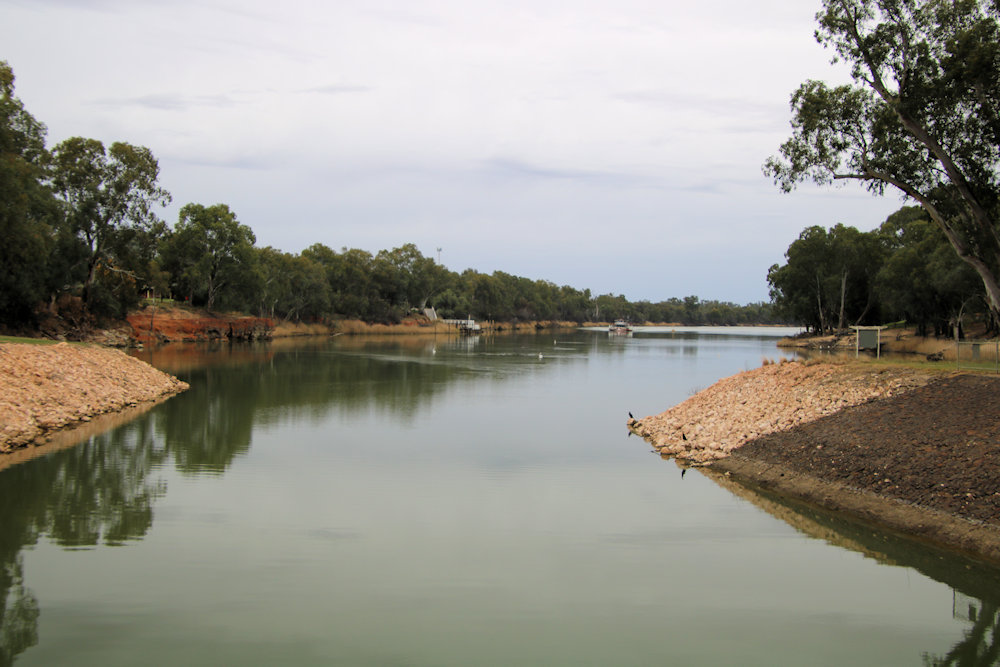Loch 11 Mildura on the River Murray
Introduction
Loch 11 at Mildura is one of the most important structures along the River Murray, helping control the flow of Australia’s longest river. It lies near the Victorian city of Mildura, a region known for its irrigation, citrus, and grape industries. The lock and its accompanying weir are vital to managing water levels for agriculture, navigation, and recreation. Completed during the 1920s, Loch 11 became part of a larger scheme that turned the Murray into a regulated river system, ensuring a stable water supply across inland Australia.
Construction and Design
The construction of Loch 11 began in 1923 as part of a joint project between the governments of Victoria, New South Wales, and South Australia. The aim was to create a reliable network of locks and weirs along the Murray to support navigation and irrigation during dry seasons. The work took several years to complete, using both manual labour and mechanical equipment typical of early 20th century engineering.
The design features a concrete weir with a series of steel gates that can be raised or lowered to control the river’s depth. Next to the weir sits the lock chamber, which allows vessels to pass between different water levels. Boats enter the chamber, and water is either added or released to lift or lower them smoothly. This system has allowed continuous navigation for both commercial and recreational craft for over a century.
Importantly, Loch 11 was built with foresight. It included a fish ladder to help native fish migrate upstream, reflecting an early awareness of the river’s ecological needs. Over time, several upgrades have improved the lock’s mechanical systems and ensured its operation remains efficient.
Operation and Function
Loch 11 operates as part of the Murray–Darling Basin’s intricate water management system. It helps maintain steady water levels for irrigation pumps that supply Mildura’s extensive vineyards and fruit farms. Without the lock and weir, the river would drop too low in summer, cutting off vital water to crops.
The lock also ensures that river traffic can move year-round. Paddle steamers, houseboats, and tourist vessels pass through daily, connecting Mildura with nearby towns such as Wentworth and Robinvale. Visitors often watch from the banks as the lock master guides boats through the chamber, a process that remains largely unchanged since the 1920s.
In addition, the weir contributes to flood control. During high river flows, gates can be raised to release excess water downstream. This ability to balance water levels has been essential in protecting farmland and riverside communities from flooding.
Environmental and Social Significance
Today, Loch 11 is both an engineering landmark and a focal point for community recreation. Families picnic nearby, anglers cast lines below the weir, and tourists take boat tours that highlight the region’s river heritage. Moreover, the lock plays an ecological role by sustaining habitats for fish, birds, and other wildlife that depend on stable water conditions.
While its original purpose was mostly economic, Loch 11 now supports tourism and environmental conservation. It stands as a symbol of Mildura’s long relationship with the Murray, showing how careful management can sustain life along one of Australia’s most important rivers.
Arrival at the River
A visit to Loch 11 at Mildura offers a close look at one of the River Murray’s most important engineering sites. The lock lies just a short drive from the centre of Mildura, surrounded by quiet riverbanks and gum trees. From the viewing area, visitors can see the broad weir stretching across the river, holding back the water that forms the smooth pool upstream.
Watching the Lock in Action
When a boat approaches, the lock master opens the gates and guides it into the chamber. Water then rises or falls to match the level on the other side, allowing the vessel to continue its journey. This process takes only a few minutes, yet it captures almost a century of engineering tradition. Moreover, nearby signs explain the history and function of the lock, making the visit educational as well as scenic.





For other places to visit in Victoria click here

Leave a Reply